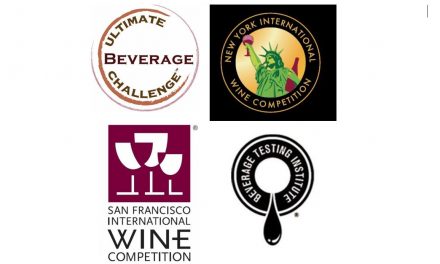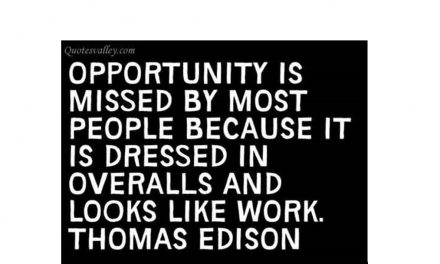This piece originally appeared in and was written for Meininger’s Wine Business International Newsletter. You can subscribe for free here:https://www.meininger.de/en/newsletter
Thursday, 19. May 2016 – 14:45
“Wow!” I thought. This wine, from this producer, at this price could be a winner in the U.S. “Have you thought of bringing it over?” I asked the producer who was exhibiting his wine at the London Wine Fair.
“To tell you the truth, I’ve thought about it, but I’m a bit gun shy,” he said. He went on to share a story about other producers he knows that never got paid for the goods they had shipped, who had been promised distribution and sales that never happened, or who lost time and money trying to figure out the three-tier system – only to be stymied.
That’s a story I’ve heard many times before – and yet it’s not difficult to avoid making mistakes that will cost producers dearly in time, money and momentum. All it takes is checking off the following ten points:
1. Invest in a guide, and make sure they specialize in wine brand introductions.
The US market and its three-tier system can seem Byzantine in complexity. And as many have found, the road is littered with potholes that will trip you up, set you back and cost you money. One great way to avoid them is to find a guide that will help navigate the process who is not only experienced in the US wine market, but has expertise launching brands here. The right guide can save a supplier from wasting money doing the wrong things, or even the right things in the wrong order.
2. Don’t launch too far or expand too fast.
Many companies want to launch in multiple states and expect to be present nationally in the first year. That’s often the recipe for disaster. Focus resources on a limited number of accounts in a limited number of markets, learn what works and only expand when you can replicate that success on a broader scale. Recognize the US market has 52 different regulatory entities (50 states plus D.C. and Montgomery County, MD.) Pick the markets in which it will be easiest to develop your case history. Volume comes later.
3. Anticipate objections and pre-empt them before they get asked.
Importers and distributors have an arsenal full of reasons why they won’t take your brand: “It won’t sell in my market. It isn’t any different than Brand X. I’m not looking for another Cabernet Sauvignon. You don’t have a track record. If I put it in, I have to take something out that I already know is selling. You don’t have a brand ambassador. It’s too expensive.” Knowing that these objections will be raised, pre-empt them so they never get asked in the first place. The best way to do that is to build a case history and creatively tell the trade about your success. The end goal being to get them to call you rather the other way round.
4. Understand that finding an importer is not necessarily your first step.
You are better off starting with a ‘service importer’ who essentially will say “yes” to every brand. Then focus on building your success case history. Next, pitch that success to the importers you want to work with in the long term. You’ll end up with more meetings and more options if you can demonstrate success, rather than simply promising it.
5. Realise the importer or distributor won’t build your brand for you.
Importers and distributors have their hands full with existing suppliers. Assume the importer and/or distributor will do nothing for a brand. The burden is on the supplier to drive distribution and sell through.
6. Ask WIIFM (What’s in it for me?).
Recognize that brands have two different audiences and each requires a separate positioning/benefit statement, or point of difference. The trade wants margin and profits, while the consumer wants romance and glamour:
a. Show the trade how your brand will make them money, margin and market share.
b. Tell a brand story that is authentic, unique and motivating. Your story needs to be one that consumers will enjoy discovering and sharing with their peers. Here’s a quick test: If it doesn’t generate a smile or tears, go back to the drawing board.
7. Don’t launch while you’re still a work in progress.
Bottles, liquid, label, marketing, brand ambassadors, and inventory all have to be complete and available in the US. Always be ready to leave a sample bottle when making a sales call, and ensure that your website and point of sale materials are ready. It’s imperative that everything is ready and available by the time you have a meeting with a gatekeeper.
8. Don’t think you can fund growth out of profits.
This is a big one. Recognize you must invest ahead of volume or profitability. Volume and profits will come – in fact, can only come – after a brand has established credibility and traction. Many brands, unfortunately, think they can support their growth through cash flow. Not only is that unlikely to work, it is often the reason an importer or distributor won’t take a brand in the first place
9. Recognize that the US system is different.
Demonstrate an understanding of the US system and respect for the gatekeepers whose approval and support are needed to get off to a good start. Invest the time to learn things like margin structures, franchise state laws, and the regulations that have a direct impact on strategy. For example, supermarkets in New York do not sell wine and retailers can only have one store. So when an importer or distributor hears a supplier say they want to “focus on supermarket chains in New York” it’s a clear indication that the supplier doesn’t understand the market.
10. Put feet on the street.
Whether you call them Brand Ambassadors, market managers or sales reps, you need people whose primary job is to get your brand into distribution on- and off-premise, and then make sure it’s selling through to consumers in each and every account. In many cases, local market support must be available before imports or distributors will even consider your brand. Yes, it would seem that’s the distributor’s job; however, in the US market, the burden is on new brands to do the work themselves.
Although these ten points may seem daunting, in the end it comes down to a few solid principles: do your research, understand the market, and build a good case for your brand. Doing that will put your brand ahead of all the others who are still making simple mistakes.
Steve Raye is the president and founder of Bevology Inc, a marketing consulting company that specializes in helping wine and spirits brands enter and grow in the US market. He is regularly called on to speak internationally on what wine brands need to do to enter the US market









